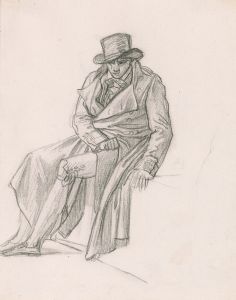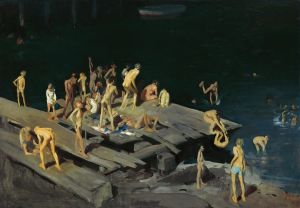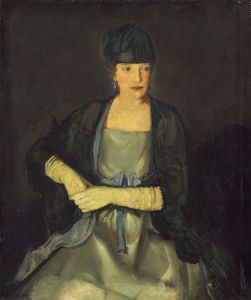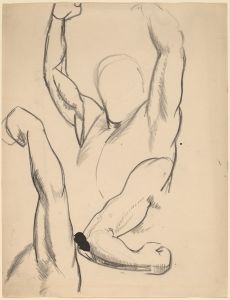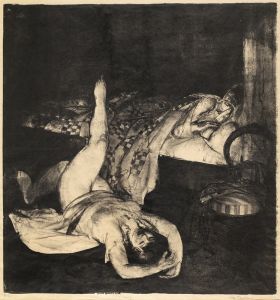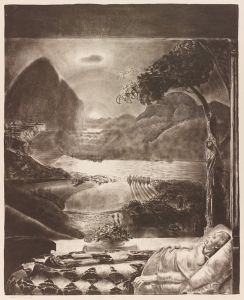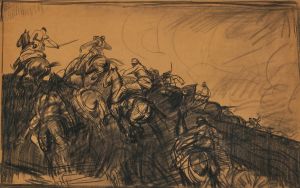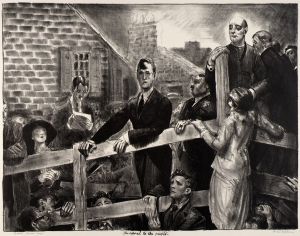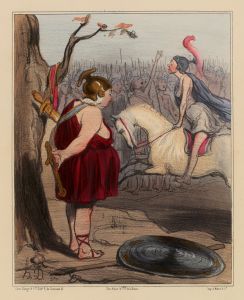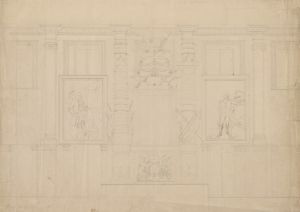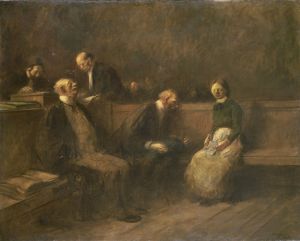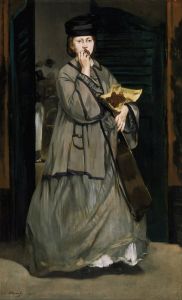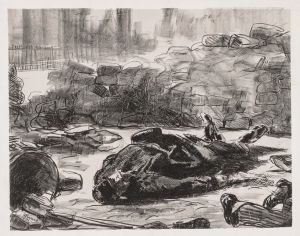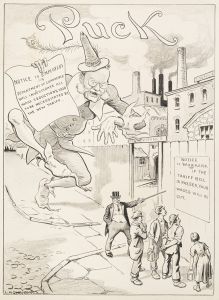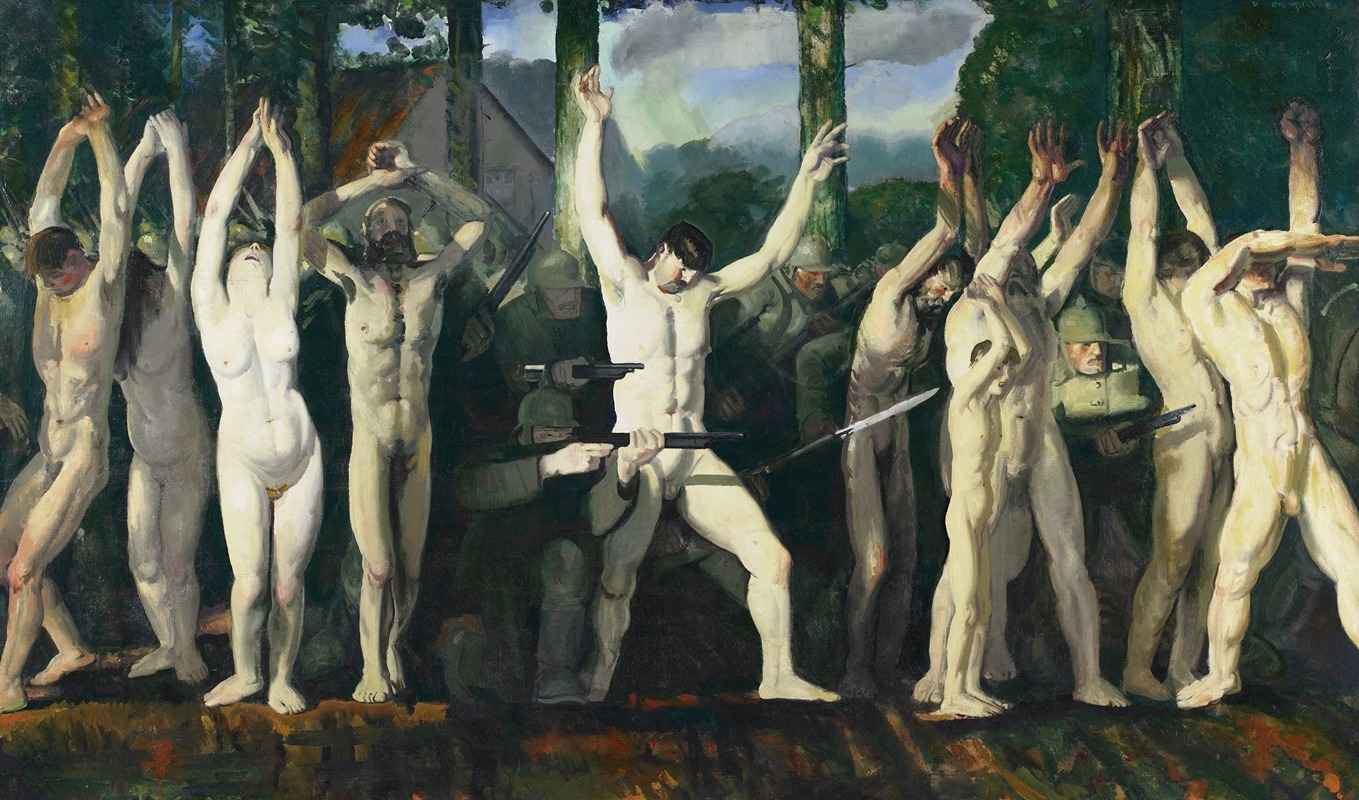
The Barricade
A hand-painted replica of George Wesley Bellows’s masterpiece The Barricade, meticulously crafted by professional artists to capture the true essence of the original. Each piece is created with museum-quality canvas and rare mineral pigments, carefully painted by experienced artists with delicate brushstrokes and rich, layered colors to perfectly recreate the texture of the original artwork. Unlike machine-printed reproductions, this hand-painted version brings the painting to life, infused with the artist’s emotions and skill in every stroke. Whether for personal collection or home decoration, it instantly elevates the artistic atmosphere of any space.
George Wesley Bellows (1882–1925) was an American realist painter known for his dynamic depictions of urban life, landscapes, and social scenes in early 20th-century America. One of his works, The Barricade, is a notable painting that reflects Bellows' engagement with themes of human struggle and conflict. Created in 1918, the painting is part of a series of works Bellows produced during World War I, which were inspired by reports and imagery of the atrocities committed during the war.
The Barricade depicts a harrowing scene of violence and oppression. The painting shows a group of civilians, including women and children, being forced to act as human shields by soldiers. The figures are arranged in a tense and dramatic composition, with the soldiers standing behind the civilians, using them as protection against an unseen enemy. The work is characterized by Bellows' bold brushstrokes, stark contrasts of light and shadow, and a somber color palette that heightens the emotional intensity of the scene.
This painting is part of Bellows' broader response to the war, which included a series of lithographs and paintings collectively known as the "War Series." These works were influenced by reports of German war crimes, particularly the invasion of Belgium, which had been widely publicized in the United States. Bellows, like many artists of his time, used his art to comment on the brutality of war and to evoke empathy for its victims.
The Barricade is often interpreted as a critique of the inhumanity of war and the suffering it inflicts on innocent civilians. The painting does not depict a specific historical event but rather serves as a symbolic representation of the broader atrocities associated with World War I. Bellows' work in this period marked a departure from his earlier focus on urban and sporting scenes, demonstrating his ability to address global and political themes with the same vigor and intensity.
Today, The Barricade is recognized as an important example of Bellows' wartime art and his commitment to addressing social and moral issues through his work. The painting is held in the collection of the Memorial Art Gallery at the University of Rochester in Rochester, New York, where it continues to be studied and appreciated for its artistic and historical significance.





